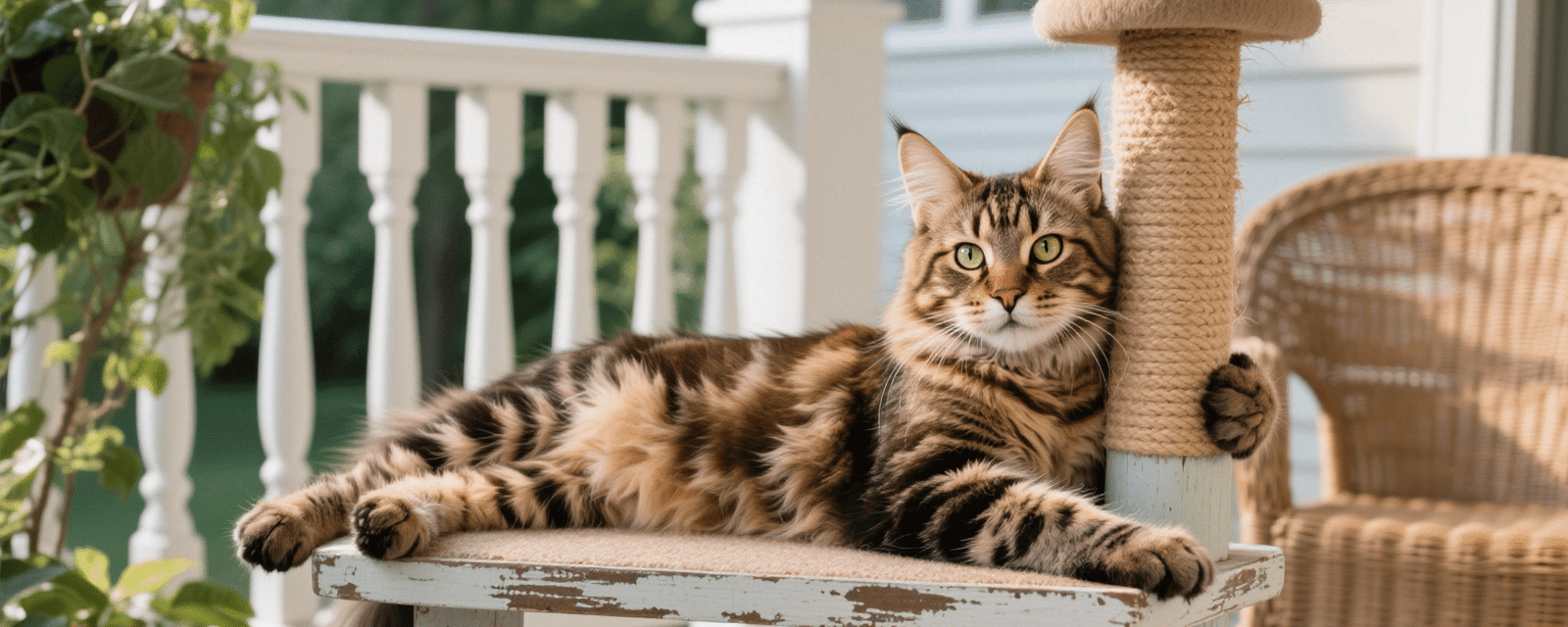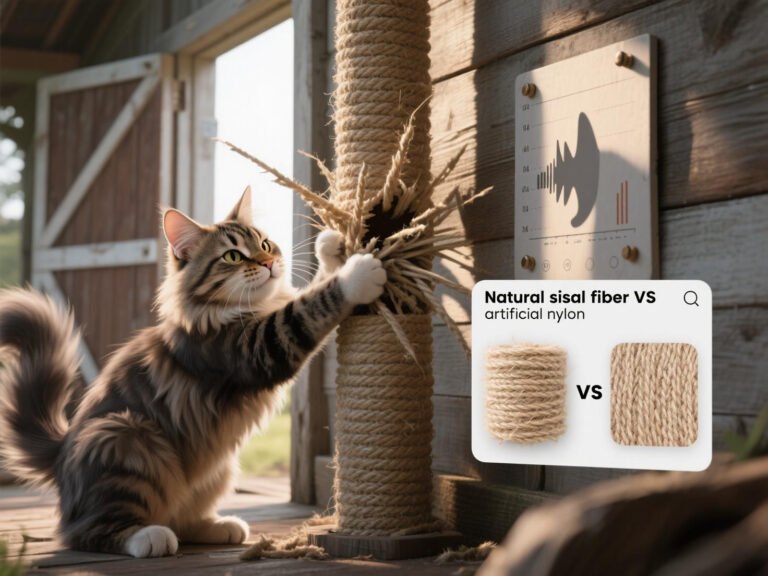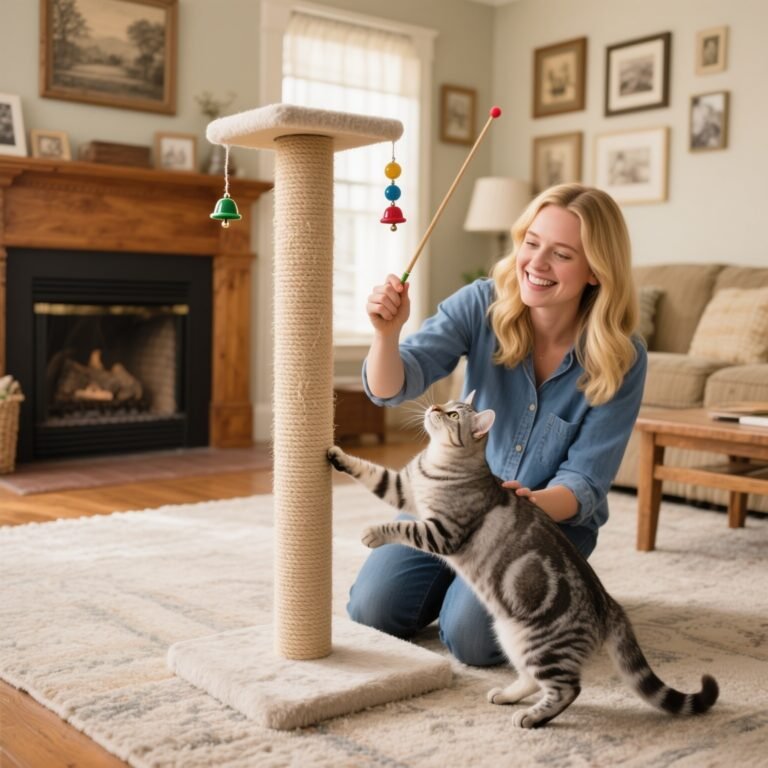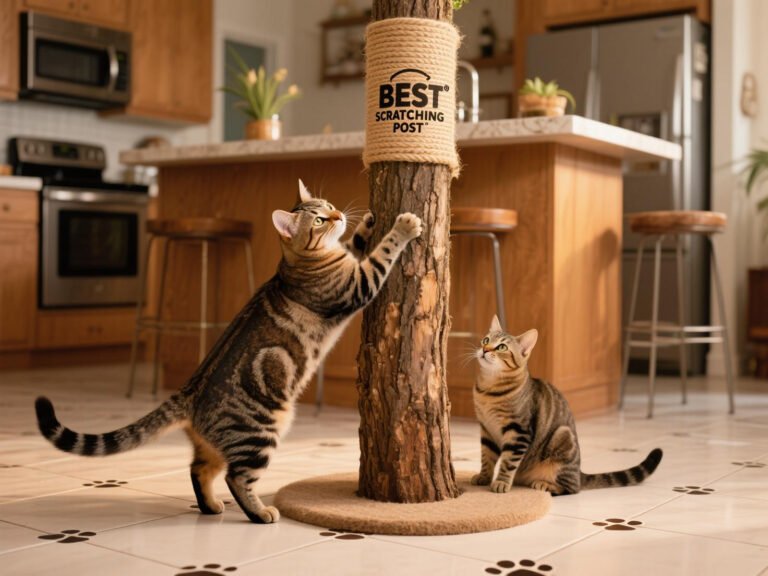Cat Scratching Furniture but Not the Post? 3 Reasons & Training Hacks
If your cat ignores their scratching post in favor of your couch or table legs, you’re not alone. Over 65% of cat owners report furniture damage caused by redirected scratching behavior, according to a 2025 PetMD survey. This guide combines veterinary insights, feline behavior science, and practical fixes to transform your cat’s destructive habits into post-friendly routines.
Reason 1: The Scratching Post Fails to Meet Instinctual Needs
Cats scratch to fulfill biological imperatives—territorial marking, claw maintenance, and stress relief. Furniture often wins over posts when these needs aren’t met.
Why Furniture Appeals
- Texture Preference: Upholstery mimics tree bark better than plastic or thin cardboard posts. A 2024 study found 85% of cats prefer sisal rope or corrugated cardboard over carpeted posts.
- Stability: Wobbly posts trigger insecurity. Cats need sturdy bases (minimum 16×16 inches for adults) to anchor their weight.
- Location: Posts placed in low-traffic areas (basements, spare rooms) are ignored. Cats prioritize high-traffic zones like doorways or near windows.
User Review:
“Our cat ignored the post until we moved it next to the couch. Now she uses it daily!” – Reddit User @CatMomLife

Reason 2: Stress or Environmental Triggers
Stress amplifies destructive scratching. Common triggers include:
- Multi-Cat Households: Competition for resources forces cats to mark territory aggressively.
- Boredom: Lack of stimulation leads to furniture clawing as a coping mechanism.
- Health Issues: Arthritis or overgrown claws make posts uncomfortable.
Fix: Environmental Enrichment
- Vertical Space: Install cat trees with scratching surfaces (e.g., Yaheetech 63” model) to reduce territorial conflicts.
- Interactive Toys: Use wand toys to redirect energy. Post-play rewards at the post reinforce positive habits.
- Pheromone Sprays: Apply Feliway on posts to create calming associations.
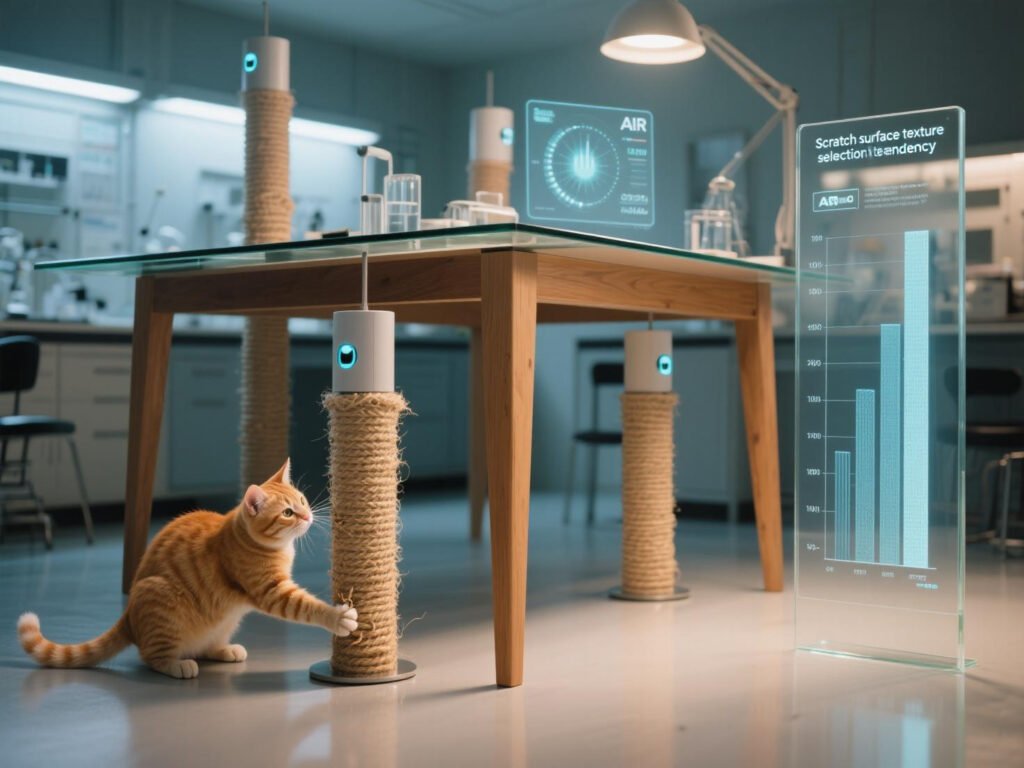
Data Spotlight:
A 2025 trial showed cats with access to vertical spaces exhibited 40% less furniture scratching.
Reason 3: Ineffective Training Techniques
Punishment (yelling, spraying water) worsens behavior. Cats require reward-based training.
Training Hacks
| Step | Action | Example |
|---|---|---|
| 1 | Lure with Silvervine | Rubbing silvervine powder on posts attracts 80% of cats, even non-nip responders1. |
| 2 | Treat Timing | Reward within 3 seconds of post-scratching with high-value treats (freeze-dried chicken). |
| 3 | Texture Testing | Offer material samples (sisal, cardboard, wood) to identify preferences1. |
Pro Tip:
Cats trained with positive reinforcement learn 3x faster than those punished.

FAQ: Solving Scratching Post Challenges
Q: How long does training take?
A: Most cats adapt within 2–4 weeks with daily sessions. Resistant cases may require 6+ weeks.
Q: Are wall-mounted posts effective?
A: Yes! Vertical posts satisfy climbing instincts. The “Catit Ultimate Scratching Post” (Amazon’s #1) features a 19-lb base for stability.
Q: Can older cats learn new habits?
A: Absolutely. Pair posts with joint-support supplements and low-angle designs for arthritic cats.
Q: Is declawing an option?
A: Never. Declawing is illegal in 12 U.S. states and causes chronic pain.
References
- ZippyPaws. (2024). Scratching Post: The Best Alternatives to Catnip. https://zippypaws.com/2024/03/01/scratching-post-the-best-alternatives-to-catnip/
- AlongWalker. (2025). Cat Tree Design Principles. https://my.alongwalker.co/z/2101.html
- Merck Veterinary Manual. (2024). Feline Arthritis Management. https://www.merckvetmanual.com/cat-owners
- PetMD. (2024). Cat Scratching Post Training Guide. https://www.petmd.com/cat/behavior
